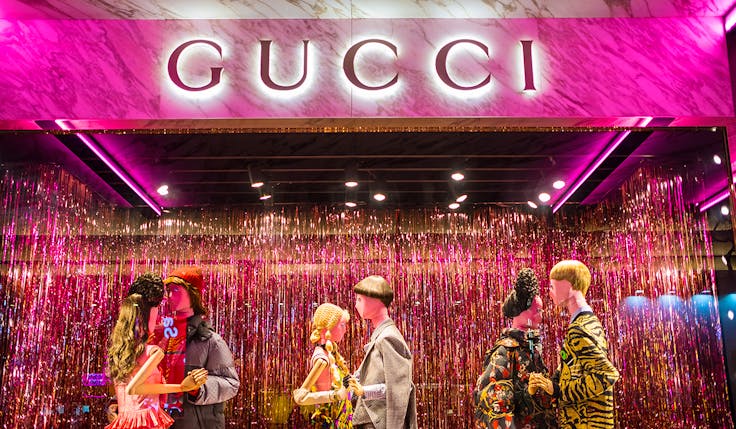User experience alone doesn’t make a brand
Improving digital business models is an imperative, but multichannel retailers should recognise that good user experience alone is not a marketing strategy.

Retail is obviously suffering. To be more specific, BRC-KPMG figures show total UK retail sales declined by 19.1% in April and 5.9% in May, month on month.
But for all the furloughed workers and closed stores, it’s still been a busy time for retailers adapting their digital business models. Like-for-like sales in May are actually up 7.9% when BRC-KPMG excludes non-essential stores (which were closed) but includes their online sales.
‘BOPIS’ and delivery increase in importance
Multichannel retailers are scrambling to improve their distribution as shoppers stay indoors. Data from Salesforce reveals that between 10 and 20 March, digital revenue for websites offering ‘buy online, pick up in store’ (BOPIS), for example curbside pickup or click-and-collect, grew by 92% compared to 19% for sites not offering it.
Bed, Bath & Beyond is one example of a retailer pushed to finally roll out BOPIS in the US. Elsewhere, retailers in essential categories facing unprecedented online demand, from Holland & Barratt to Tesco, have had to expand their fulfilment capability.
Compared to before the outbreak, free delivery (51%) and reliable delivery (51%) are the things people think have become more important to them, according to a multinational survey by Globalwebindex.
Margins and bargains
The profitability of ecommerce is still a thorny issue, however. Walmart and Marks & Spencer are amongst the larger retailers aiming to encourage customers to buy higher-margin items more regularly online. Walmart has brought together its two apps (grocery and other) in an attempt to achieve this, and M&S is including 1,600 essential clothing SKUs in its Ocado partnership (alongside 6,000 food SKUs). Morrisons had just launched an ecommerce website for its clothing range at the time of writing.
In fashion, prices are an issue, too. Although online sales are up dramatically for some retailers in May, Nosto reports that average order value was down 7% year-on-year in the UK in April, and customers are looking for bargains. Discount rates in the US hit 34% in mid-March, according to Salesforce again, higher than Cyber Monday’s average 31% discount rate. Returns periods have been extended in an attempt to mitigate costs when returns cannot yet be taken to store (perhaps for this reason, the return rate has dipped).
Ecommerce UX and content are ways to differentiate a brand when done well, but they aren’t everything.
So, there’s a flurry of activity to compete better on distribution, including user experience (UX), and price. But what will be interesting over the coming months will be the winners of the brand battle online.
Imad El Fay writes for menabytes.com that though “Ecommerce will emerge as a net winner post-Covid, … [the] share will not be as significant as people expect, simply because ecommerce and physical commerce satisfy entirely different needs: The former offers convenience while the latter provides experience. Consumers need both, and will eventually return to shopping in retail stores and malls.”
But for now, ecommerce levels are high and it’s interesting to assess what the value proposition for multichannel retailers looks like. How distinctive are they online?
Digital doesn’t change the fundamentals
Multichannel retailers are competing more with pure-plays than ever before, pure-plays who have got online promotion down pat. The experience of using pure-plays is usually fine-tuned, but that’s not enough for differentiation; they also excel at marketing and content online and often compete on price, too.
Take Boohoo: it has seen ‘robust’ trading in May. It is obviously succeeding on price, convenience (e.g. delayed payment, which M&S has recently rolled out, too) and rapidly changing product lines, but layered on top is its ability as a brand to tap into the online culture of its core customers – see #boohoointhehouse as the latest example.
Acquiring and converting new customers online isn’t cheap. Your marketing must work harder and your website must work harder to showcase stock if customers aren’t also being inspired in stores.
M&S’s announcement in May that it will stock third-party fashion and home labels online could be seen as an admission that the retailer’s product and own-brands may not be enough of a lure for some shoppers. What happens when your USP – people like to pop in for a coffee and a browse and to buy underwear – is taken away?
Taking online in isolation is an interesting thought experiment because it shows how well a brand stands up without its cafes, store assistants and, to some extent, its heritage (your muscle memory of shopping in the local store).
M&S’s new dresses may be promoted by Holly Willoughby, but when I viewed one of the product pages online (‘printed yoke midi waisted dress’) there were only two product photos (another dress had five photos). Other items on the ‘new in’ page had just one product shot. Head to Next and its website pretty much always has five product images on product pages, and you’ll see the Emma Willis range of dresses includes images of the celeb herself.
Website as brand
Look at Ikea, whose self-service retail concept means that product has always had to stand out, even if it is very competitive on price. The website performs the same job as the catalogue in creating an ideal, with room inspiration and ideas, not to mention sumptuous product page photography. The furniture retailer has made all of its online planning services free during lockdown as a further method of engaging online shoppers.
Ecommerce UX and content are ways to differentiate a brand when done well, but they aren’t everything. As Isobar Sweden’s Nils Andersson Wimby writes in an article for Econsultancy: “UX can help reduce price elasticity, increase conversion levels, and potentially be a relevant claim to base communications on…” but “Experience is not a strategy, and it is not something that automatically makes you unique.”
According to Bluecore’s Covid-19 Retail Trends report, the number of first-time purchases placed through the ecommerce sites belonging to traditional chain stores grew by a whopping 119% compared to April last year. The key test is how many of those chains can maintain this momentum, how many new customers are willing to return. Ecommerce can’t save everyone.







